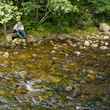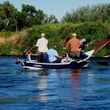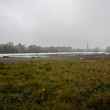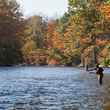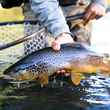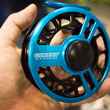Winter is a great time to go fly fishing. While far too many anglers are busy at the vice instead of on the water, trout keep doing what they do, albeit a bit more slowly and methodically. And so there are trout to be caught and far fewer anglers to compete with. But winter fly fishing comes with its own set of difficulties and frustrations, chief amongst them those that come when temperatures drop below the freezing mark. Freezing temperatures bring ice, which wreaks havoc on fly rods, lines and reels. Colder temperatures also make an angler's exposed hands and fingers not only unpleasant but potentially dangerous.
If only there was a way to go fly fishing in winter while avoiding all of these common aggravations. Well, perhaps there is: tenkara. By nature, tenkara fishing can offer a respite from many of the complications that a traditional fly rig faces when hitting an icy stream.



